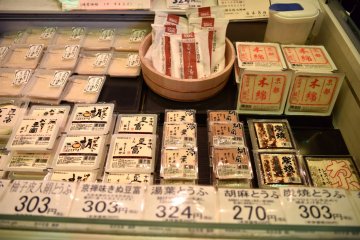Pressed against the window, her breath steaming up the glass with longing, Kaori meets her love for the first time. Eyes locked, spellbound, it was love at first sight. Her object of desire, a delectable Taro Yamamoto handbag, a simple floral design inspired by Noh stories of devotion and loyalty from the days of old, infused with nature’s grace, a lily, a butterfly.
In the tenth century, such beauty was only found in the Imperial Court, where only royal patrons provided lavish artists with exclusive commissions and a sanctuary free for them to articulate objects of beauty.
In 1831, Takashimaya was established as a kimono and cotton goods store. Its history is synonymous with that of Kyoto itself. When the capital moved to Tokyo, Kyoto, along with Takashimaya had to reinvent itself, from the seat of imperial patronage and politics, to a living treasure of fine arts and culture for all. Its motto, “everyone’s Takashimaya” brought luxury to everyday life, and fulfilled the dreams of little girls and boys from around the world.
If you look closely at Taro Yamamoto’s art and design, you can see a connection with Rinpa art, which reached its pinnacle under the talented guidance of Kamisaka Sekka in the 19th century, and celebrated its 400th anniversary in 2015. Like Yamamoto, Sekka worked closely with Takashimaya Department stores to fulfil his goals, bringing the beauty of a modernized Rinpa from the rarefied world of the Imperial courts to the public, so we too can be inspired and elevated by such sublime beauty.
He thought that fine art was not just a decorative object in an art gallery or museum, removed from the emotions and joys of everyday life, but have it become part of the object, whether it is a handbag or part of a dining set.
From the 1910s, when Takashimaya held its first exhibition with the Kyoto arts and crafts society (the Katsumikai), it has been showcasing the best in Japanese design, having the delicacies of traditional arts, but also fitting into the modern lifestyle. A day out in the department store is an event to be enjoyed, from the comfortable cafes to the occasional concerts or a viewing at its art studios.
2012 marked the sixtieth anniversary of Takashimaya’s trademark, a simple pink rose wreath. It celebrated this by the Takashimaya Rose Art session with original works by 24 Japanese artists, including Yu Kiwanami, Chihiro Nagashima, Taro Yamamoto and Kaori Watanabe, who are all active in contemporary art scene. These works appeal to us with its floral and seasonal motifs, which plays tribute to traditional Japanese themes, and at the same time, designed with contemporary fashion in mind. Takashimaya continue to support innovative and up and coming artists with a number of rotating exhibitions each season.
These artists carry the tradition of Kyoto artists and handicraft masters working closely with Takashimaya Department Store, to bring beauty in the lives of all people. In many ways they are like the current day Kamisaka Sekka, whose slightly abstract and modern designs were inspired by the emotion of Rinpa art and Noh drama.










